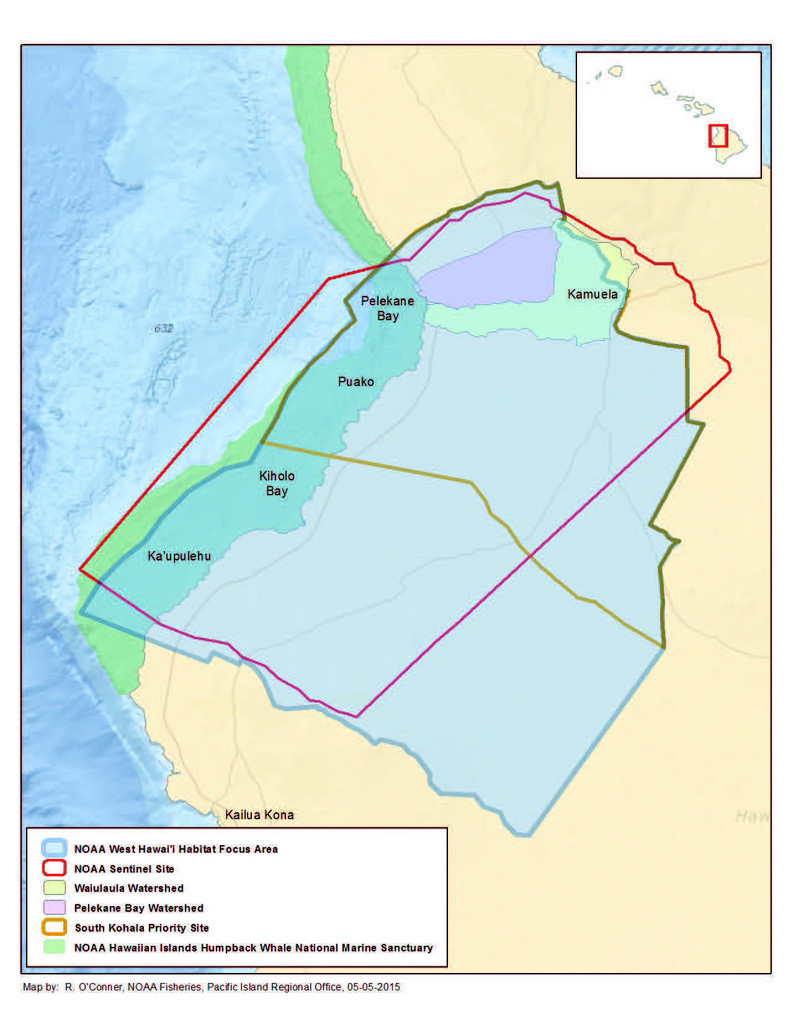Dominant Benthic Structure and Biological Cover Habitat Maps for West Maui and West Hawaii
Access & Use Information
Downloads & Resources
-
WestHawaii_dominant.zipZIP
Zip file containing dominant substrate and dominant biological cover data...
-
WestMaui_dominant.zipZIP
Zip file containing dominant substrate and dominant biological cover data...
-
Full Metadata Record
View the complete metadata record on InPort for more information about this...
-
NOAA Coral Reef Conservation Program Website
Link to the NOAA Coral Reef Conservation Program website
-
Pacific Islands Fisheries Science Center Website
Pacific Island Fisheries Science Center homepage
-
Citation URL
NOAA Habitat Blueprint West Hawaii Focus Area website
-
Citation URLHTML
Pacific Islands Benthic Habitat Mapping Center (PIBHMC) website. All data are...
-
Citation URL
West Maui Ridge to Reef Initiative
-
Global Change Master Directory (GCMD) Keywords
10 views
The information provided on this page seeks to define how the GCMD Keywords...
-
NOAA Data Management Plan (DMP)PDF
NOAA Data Management Plan for this record on InPort.
Dates
| Metadata Date | February 29, 2024 |
|---|---|
| Metadata Created Date | November 12, 2020 |
| Metadata Updated Date | March 16, 2024 |
| Reference Date(s) | 2016 (publication) |
| Frequency Of Update | notPlanned |
Metadata Source
- ISO-19139 ISO-19139 Metadata
Harvested from NMFS PIFSC
Graphic Preview

Additional Metadata
| Resource Type | Dataset |
|---|---|
| Metadata Date | February 29, 2024 |
| Metadata Created Date | November 12, 2020 |
| Metadata Updated Date | March 16, 2024 |
| Reference Date(s) | 2016 (publication) |
| Responsible Party | (Point of Contact, Custodian) |
| Contact Email | |
| Guid | gov.noaa.nmfs.inport:32811 |
| Access Constraints | Cite As: Pacific Islands Fisheries Science Center, [Date of Access]: Dominant Benthic Structure and Biological Cover Habitat Maps for West Maui and West Hawaii [Data Date Range], https://www.fisheries.noaa.gov/inport/item/32811., Access Constraints: None, Use Constraints: These data are not to be used for navigation purposes. Please cite NOAA Coral Reef Ecosystem Program (CREP) when using the data. Suggested citation: Coral Reef Ecosystem Program; Pacific Islands Fisheries Science Center (2016). Dominant Benthic Structure and Biological Cover Habitat Maps for West Maui and West Hawaii. https://www.fisheries.noaa.gov/inport/item/32811 [access date], Distribution Liability: While every effort has been made to ensure that these data are accurate and reliable within the limits of the current state of the art, NOAA cannot assume liability for any damages caused by errors or omissions in the data, nor as a result of the failure of the data to function on a particular system. NOAA makes no warranty, expressed or implied, nor does the fact of distribution constitute such a warranty. |
| Bbox East Long | -155.822838 |
| Bbox North Lat | 20.061727 |
| Bbox South Lat | 19.772429 |
| Bbox West Long | -156.100504 |
| Coupled Resource | |
| Frequency Of Update | notPlanned |
| Graphic Preview Description | NOAA Habitat Blueprint West Hawaii Focus Area |
| Graphic Preview File | https://www.habitatblueprint.noaa.gov/storymap/hfa/hfa_pages/images/westHawaii/location_map.jpg |
| Graphic Preview Type | JPG |
| Harvest Object Id | d9988f1d-4a94-4eeb-9664-34961f0a4f11 |
| Harvest Source Id | c0beac72-5f43-4455-8c33-1b345fbc2dfe |
| Harvest Source Title | NMFS PIFSC |
| Licence | NOAA provides no warranty, nor accepts any liability occurring from any incomplete, incorrect, or misleading data, or from any incorrect, incomplete, or misleading use of the data. It is the responsibility of the user to determine whether or not the data is suitable for the intended purpose. |
| Lineage | The Iso Cluster Unsupervised Classification tool was used to classify the three-band Principle Component Analysis (PCA) image into distinct structure and cover classes. The unsupervised classification produced a delineated image of substrate and cover of the seafloor across the entire West Hawaii and West Maui priority areas. |
| Metadata Language | eng |
| Metadata Type | geospatial |
| Old Spatial | {"type": "Polygon", "coordinates": [[[-156.100504, 19.772429], [-155.822838, 19.772429], [-155.822838, 20.061727], [-156.100504, 20.061727], [-156.100504, 19.772429]]]} |
| Progress | completed |
| Spatial Data Service Type | |
| Spatial Reference System | |
| Spatial Harvester | True |
| Temporal Extent Begin | 2006 |
| Temporal Extent End | 2014 |
Didn't find what you're looking for? Suggest a dataset here.

